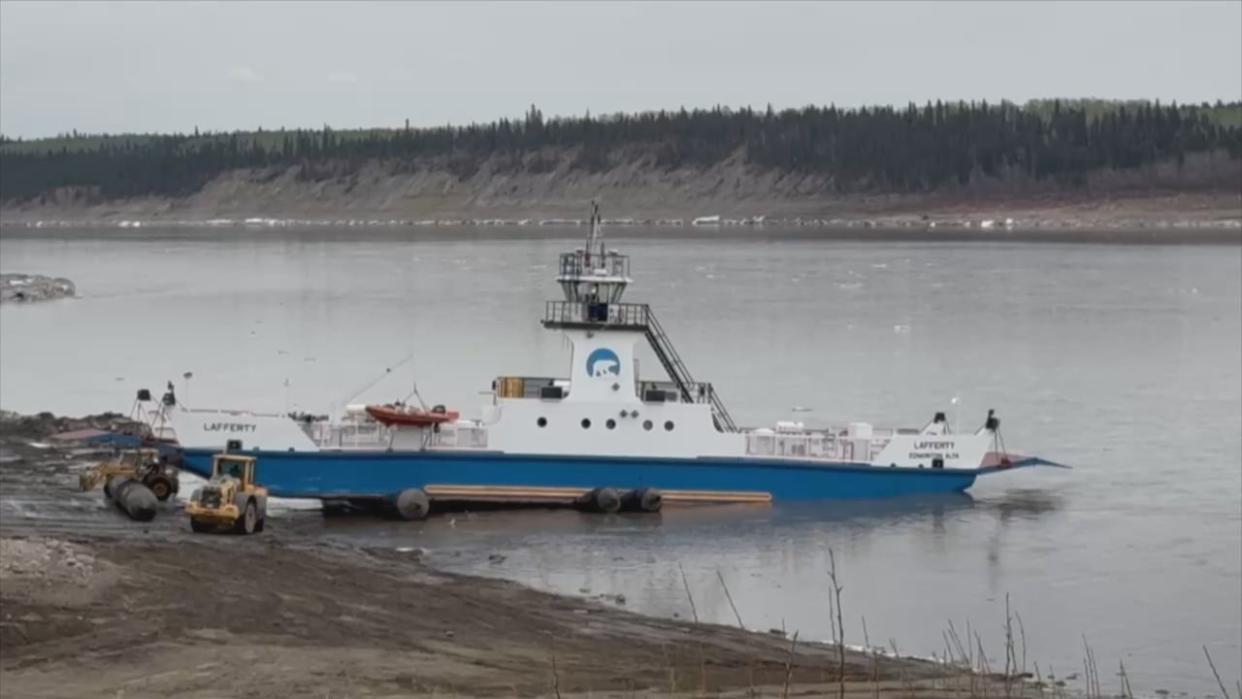As Fort Simpson, N.W.T., ferry crossing opens for the season, low water levels worry mayor

The mayor of Fort Simpson, N.W.T., is worried that low water levels could impact the ferry's ability to operate, potentially leaving the community isolated in the summer months.
The boat launched into the Liard River crossing on Tuesday and the Department of Infrastructure posted on Facebook that it opened on Wednesday.
But Sean Whelly, mayor of Fort Simpson, says water levels are already so low that weight restrictions could be implemented on the ferry early on.
Whelly the water levels are the lowest he's ever seen at this time of year.
"This is kind of a first, everybody in Simpson is looking at the extent of the sandbars," he said.
Food and fuel would be impacted by restrictions
He said on Monday that the water levels were at 2.4 metres and that in the past, weight restrictions have been placed on the ferry when it is at two metres. This would limit the amount of large trucks that can access the community.
"Our food truck and things like that, fuel trucks, they're not going to come across," he said.
"You'd be having to break the loads apart."
In the past, the boat has been shut down at 1.8 metres.
Bigger and heavier loads would have to wait until the water levels rose, meaning construction jobs would likely be delayed and necessities, like food and fuel, would also need to come in through other, more costly, modes of transportation like flights.
"I'm hoping that this doesn't come to be and that we do get moderate amounts of rain at least to keep both the fire danger and … the water levels up for us," Whelly said.
Low water has led to intermittent shutdowns of the ferry and it increases the likelihood of it hitting rocks. Whelly said this will make it more difficult for people to plan vacations.
Calls for a bridge, dredging
As for a long-term solution, Whelly says the long-discussed bridge could help the community stay more secure.
"If I could wave a wand and say how do we, how do we address this problem? I would say the territorial government needs to seriously take a look at this in terms of its long term climate strategy. And I look at developing a proper bridge study for the Liard River," he said.
Dredging is another solution that's been suggested.
Whelly said he's heard that the middle of the Liard is covered in bedrock and would be complicated to address, but that it is another avenue the territorial government could explore.
Jacqueline Demers is the regional superintendent for the Dehcho region with the Department of Infrastructure.
She said the territorial government is looking into doing some digging where the boat approaches on the east side of the river. This is different from dredging as its done from the shore.
Demers says they still need to go through regulatory process before completing this.
She said low water levels do impact weight restrictions, but there are other considerations.
"But it's not just water levels that take effect, it's also what's happening with the river, in the springtime we can deal with debris and in the fall time it's ice," she said.
"There's many moving pieces."


